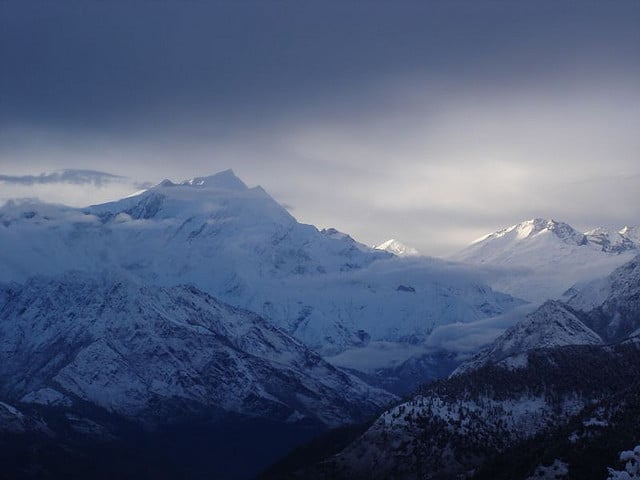As many as 29 people are confirmed dead and hundreds are still missing in the Nepal Himalayas due to heavy snow and rainfall from cyclone Hudhud that originated in the Bay of Bengal a week ago. According to local authorities, five helicopters are searching for those missing along a famous trekking circuit around Annapurna Mountain in western Nepal. At least 300 trekkers were reported to be in the area at the time. Nepalese, Israeli, Canadian, Indian, Slovak and Polish trekkers are among those killed.
Thirteen dead bodies had been recovered by late Wednesday from Manang district and five more on Thursday morning from Thorangla Pass at an altitude of about 5,500 metres in the Mustang district of western Nepal. Local authorities said about 200 people had been rescued by Friday. “Our rescue and search operation is on a war footing, we can’t to say how many are still missing as it is the peak time for tourists on the trekking trail,” said Devendra Lamichhane, chief district officer of Manang district.
According to the Trekking Agencies Association in Nepal (TAAN) at least 300 people may have been on the trail. Communications with many trekking teams have not been established yet. “We are collecting information from various travel agencies as it is not easy to estimate because many trekking agencies send preparation teams before tourists which are not taken into account, “said Keshav Pandey, rescue and search operation coordinator of TAAN.
Hundreds of trekkers undertake the week-long Annapurna circuit every year. According to Pandey there has been heavy snow and rainfall since Monday so many who were already at high altitude were stranded.
Climate scientists from the Intergovernmental Panel on Climate Change have previously warned that climate change is likely to make storms more severe and more frequent.
This is one of the highest number of casualties recorded on Nepal’s trekking trails and will put the tourism sector in trouble, which contributes nearly 8% of the country’s total GDP. Trekking agencies are blaming the government for not issuing any early warnings, despite having information about the cyclone well before the event occurred.
The Nepal government has not yet issued any official statement on the event. “Most of the trekkers were killed after heavy snowfall trapped them and some were killed after they lost the way,” said Lamichhane of Manang district.
Cyclone Hudhud ravaged the large city of Visakhapatnam on India’s eastern coast before moving inland. Normally cyclones quickly dissipate their strength over land. But this is the second time since 2009 that a cyclone has been strong enough to cross the Indo-Gangetic Plains and reach the Himalayas. In 2009, Cyclone Aila raced up the India-Bangladesh border and hit Bhutan, where it caused heavy damage. Apart from causing 21 deaths in India’s coastal areas, Cyclone Hudhud has killed 19 people in Uttar Pradesh far from the coast, according to the state government. The storm then raced further up the Himalayas.

